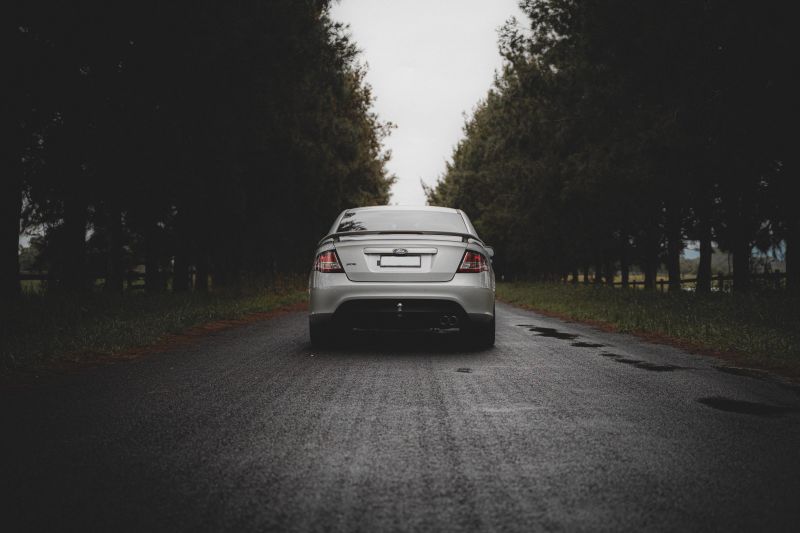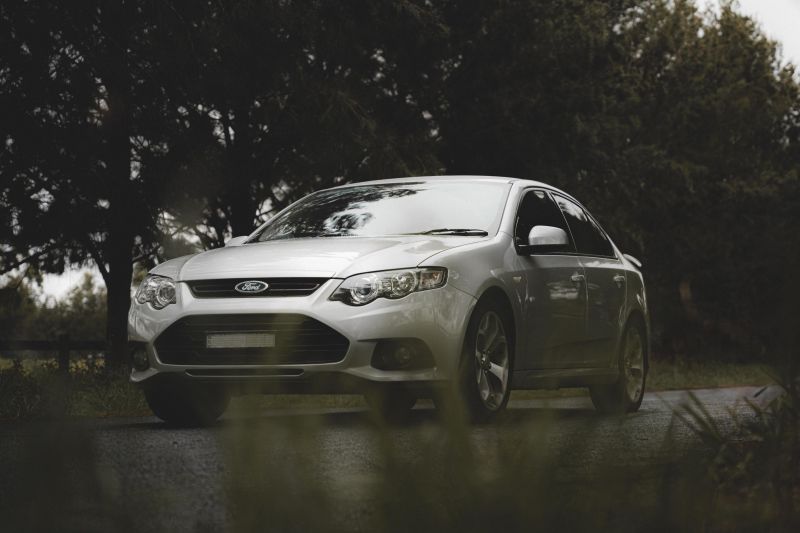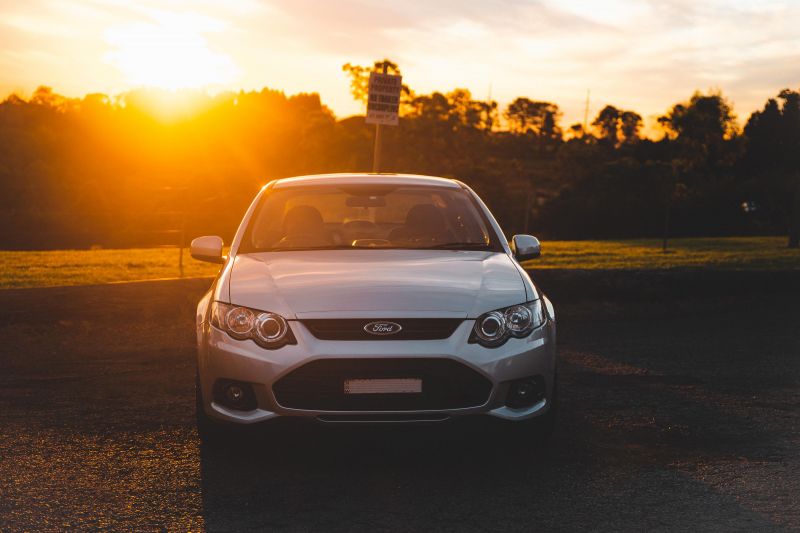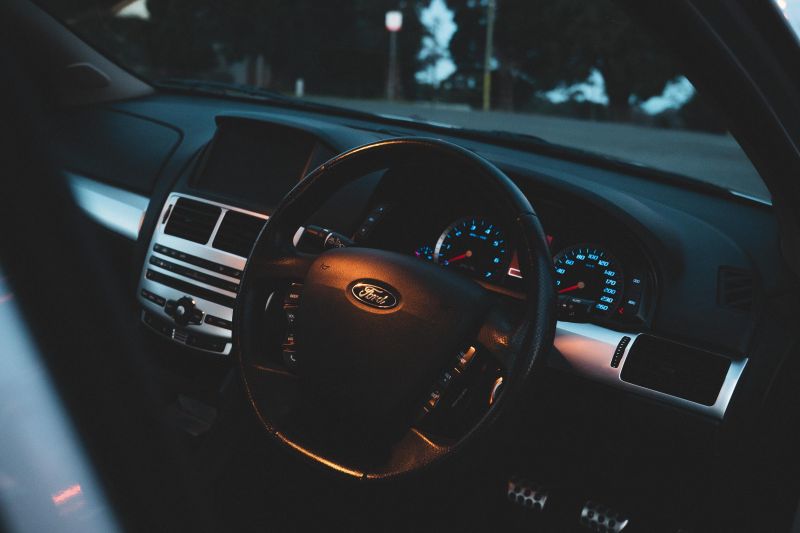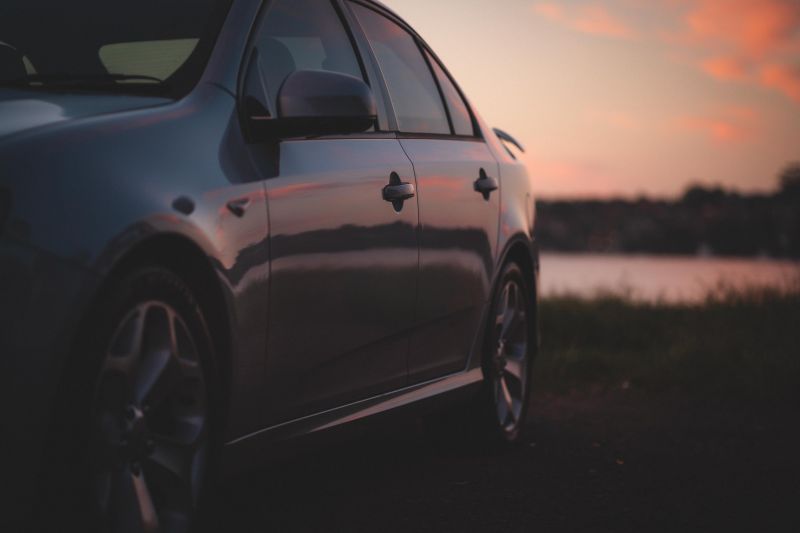About the Ford Falcon
James G purchased this Ford Falcon used for $14,000 (including all on-road costs) in 2020. James G would buy this car again because: “Despite discovering a few mechanical quirks inherited from the previous owner, the car presents extremely well for a 10 year-old car. It has been a spacious daily driver while delivering a fun driving experience with a great engine and driveline. Not to mention taking mine home just before the Covid tax wreaked havoc on the used car market. “
How reliable has your car been? Tell us about any issues.
Now’s the time to explain the mechanical ‘quirks’ the car inherited from the previous owner.
Upon buying the car and driving it a couple hours back to where I live, a rear wheel bearing failed literally just as I pulled into my street. After getting the rear wheel bearings replaced, my local mechanic explained sellers often over tighten wheel bearings to hide the noise they make when they are heavily worn to sell the car.
However, once overtightened, they can fail much quicker which is what happened in my case…
Nevertheless, the XR6 has remained reliable and safely delivered me home every time over 15,000 kilometres worth of city and highway driving. Despite driving like a maniac at times, it’s never overheated and the Barra inline-six has remained as dependable as ever.
At 98,000km it feels the same to drive as it was when I picked it up with 83,000km and I’ve only had to replace common wear items.
What do you think of the ownership experience with your car?
When originally in the market for my car, I was looking for an XR6 specifically with a manual transmission as I love the fun that it adds to the driving experience and the control it brings. I was looking for a car in good condition as I knew these homegrown Aussie heroes would only climb in value especially with the rare combination of a manual transmission.
After learning more about the mechanical aspects of cars, I started to discover that this XR6 probably lived a life dissimilar to what its exterior condition conveyed. While the interior and exterior of this car are in great condition, some parts have worn and been replaced by the previous owner well before Ford say they should.
An example of this is the differential bushes which are known for not lasting far beyond 100,000km. However, the bushes in the rear of my car were replaced before 80,000km for a stiffer aftermarket set of bushes. Add to this the synchromesh on second gear is slightly worn and the car was sitting on cheap tyres suggests to me that skidding was probably routine before I owned the car.
Otherwise, my ownership experience has been great.
In my opinion, owning a car of this vintage is the best compromise in terms of modern safety features and old school engineering for those who like to work on their cars as well as drive them.
Not only has my XR6 helped me learn so much about the car but also about me as a driver. It’s allowed me to gain valuable experience driving a manual rear wheel drive car and learn its handling characteristics. The engine bay is spacious, and the car is relatively simple to work on and far less computerised than modern cars.
Are you happy with the price and features of your car?
As I touched on earlier, I was lucky enough to purchase the car before Covid sent the prices sky-high, so I am super happy with the price I paid. That said, it was a decent deal pre-Covid.
I am also happy with the features of the XR6. The biggest feature in my eyes is its blend of characteristics that suited me perfectly. First on my list was being fun to drive and decently quick. Tick! Second was rear-wheel drive with a manual transmission. Another tick.
As I have previously been in involved with plenty of woodworking projects, I also needed a car with some room. With the back seats down, I was able to squeeze in a surprising amount of timber. With the back seats up the car comfortably fits four adult friends.
Last, but not least, is the level of safety features in the XR6. When released in 2012, it had a five-star ANCAP safety rating and an overall score of 34.61/37.
The FG Falcon had Dual front and curtain air bags. Complementing this was 4-channel Antilock brakes, electronic brake force distribution, Dynamic Stability Control (DSC) and traction control. Both DSC and traction control can be disabled if the driver chooses.
What do you think of the performance and economy of your car?
The heart of the XR6 is a 4.0L inline-six engine carrying the legendary ‘Barra’ name, albeit in naturally-aspirated form here. The popular opinion is the only way to have a Barra is with a turbo attached and while the XR6 Turbo is probably great to drive, the N/A version definitely pulls its own weight.
On 95 Octane the Barra makes 200kW and 400Nm of torque. That lump of torque starts to arrive at 1800rpm and means you don’t have to rev all the way to the 6000rpm redline to get the most out of the engine. Throttle response is good and it’s punchy from 2500rpm and has quite decent in-gear acceleration even in higher gears.
However, being naturally-aspirated, it rewards and encourages you to chase the redline. You can feel the power taper off slightly after 5500rpm but combined with its reputation for reliability, it’s a great engine. I have installed an Xforce cat-back exhaust which elevates the experience all the more. It’s not obnoxiously loud and gives the Barra a uniquely tough note rather than making it raspy and droney.
Combined with a very audible intake that sounds weirdly like a turbo with screamer pipe, the car sounds awesome.
The Barra is mated to a Tremec TR6060 manual transmission. The shift action on the Tremec might not to be to everyone’s taste but I love how notchy and direct it feels. It slides into gear almost telepathically and is a great match for the engine especially for Australian speed limits. The ratios are reasonably closely stacked and the car cruises at around 1700rpm at 110km/h in sixth gear.
The clutch on the XR6 is self-adjusting and feels very family friendly. The pedal weight is quite light and not as springy as many Japanese cars. The bite point is also high up the pedal travel.
This makes it easy to drive in traffic, but I’d prefer a slightly more aggressive clutch with a lower bite point and springier pedal feel.
Now onto what I don’t like…
The firmer polyurethane diff bushes I mentioned earlier have a tangible impact on the way the car drives. While they do last significantly longer than the factory bushes, they go too far in the other direction and are too firm for my tastes.
As a result, Noise, Vibration and Harshness is much higher and more clunks and driveline lash is transferred into the body of the car.
What do you think of the technology in your car?
For a 2012 model car I think the technology is perfectly decent. One of the main reasons for opting for an FG Mk2 Falcon over the Mk1 was the infotainment system.
The Mk2 system is a colour touchscreen that can connect to your phone physically through an aux port or through Bluetooth. Unfortunately, my car wasn’t optioned with Satellite navigation nor a reversing camera, but I did install a patch harness and reverse camera kit from ASL automedia that integrates and runs like factory in tandem with stock reverse sensors.
It’s worth noting the XR6 also has dusk-sensing headlights and a digital screen containing a digital speedo (amongst other driving data) flanked by two physical dials. The dials are backlit blue and both dials and screen are easy to read.
The rest of the interior is just average but on par with competitors for its age and original price. There aren’t really any soft touch plastics or materials on the dash but at least the rear passengers get air-con vents.
Unfortunately, the plastics do creak and rattle over stretches of rough road and there are not enough decently sized cupholders.
That being said though, the infotainment is quite decent and syncs the Bluetooth audio quicker and more reliably than some modern cars. For its age it’s not a bad place to be.
What do you think of the ride comfort and handling of your car?
For a big car, the XR6 handles well.
Being Australian designed and built, it feels at home on the rough undulating tarmac of rural roads. The chassis naturally has such great balance about it helped by the lack of weight (compared to more powerful V8 Falcons) over the front wheels.
The front becoming light and pushing into understeer can easily be neutralised by adding more throttle and inducing more oversteer. It feels pliable on the limit. The grip levels are heightened by Michelin Pilot Sport 4s (added since purchase) which exhibit great wet and dry weather grip. They also have good relative wear resistance and are a great bang for your buck tyre.
The previous owner fitted aftermarket shock absorbers (I am unsure if this is because the originals gave up or if he was chasing a sportier ride). It’s worth mentioning that I haven’t driven an XR6 on factory shocks so I will just give impressions on my car.
Body roll is kept to a minimum, but this has come at the cost of comfort. In my opinion these shocks are too firmly damped for small imperfections. As such, the car doesn’t feel as compliant as I’d like. Yet they also feel too loosely damped over high-speed undulations. The ride isn’t unbearable, it’s just on the firm side of comfortable but I will be reinstalling factory shocks to see if they make a difference.
The steering is a highlight of the XR6. It’s an electrically assisted hydraulic rack and the weight is near perfect for this car. It’s not a chore to steer in a carpark but doesn’t feel too light at higher speeds like many modern cars do.
The steering is quite communicative, you feel the front wheels reacting and trying to follow contours in the road. However, the rack’s ratio could be slightly reduced to aid turn in and response. Regardless it’s a great system and a breath of fresh air from the many electric systems out there.
While the stock system was adequate, I’ve replaced the brakes chasing a firmer and more responsive pedal feel with increased fade resistance. The rotors are slotted DBA T2 units clamped by Bendix Ultimate+ pads.
Thankfully, this affordable upgrade has brought the desired firmness and responsiveness to the pedal. This allows the driver to stop as required while using less pedal travel. Although the upgrade is good, I’d still prefer if the vacuum assist was more powerful and the pedal stroke shorter to mimic the responsive firm brakes of many European cars without having to turn to the aftermarket.
Do you have any additional comments about your car?
Writing this review has brought back fun memories of the golden days of Australian car production.
I’m glad I could experience what is arguably the glory days of Aussie cars. Driving the XR6 with a manual transmission has taught me to better anticipate potential hazards further up the road and drive appropriately to adverse weather conditions.
There really wasn’t another vehicle on the market that struck the perfect balance of price, reliability, space, comfort, ease of working on, great engine, manual transmission, rear wheel drive and how enjoyable it was to drive.
